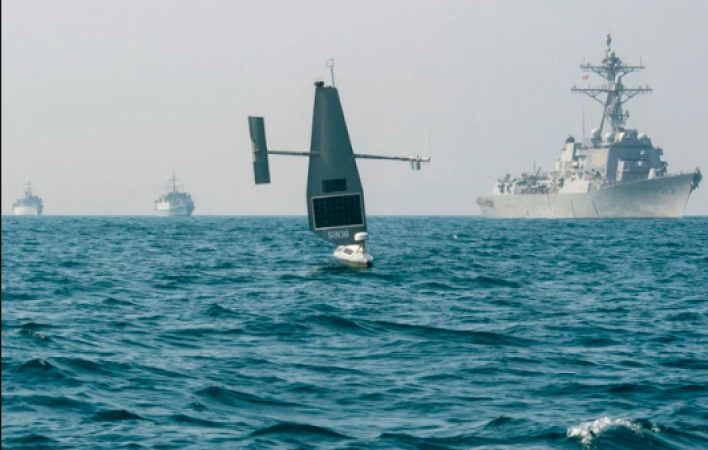
Dubai: Unmanned surveillance ships that Iran has seized twice in recent months in the Middle East were tested by the US Navy and the United Kingdom during a joint drone exercise in the Arabian Gulf on Friday.
Conducting a separate drone exercise, the US Navy warned commercial ships in the wider Middle East not to interfere with their operations and announced that it would continue to use drones in the region.
The US promise to continue sailing in the high seas amid stalled talks over Iran's broken nuclear deal with world powers and protests as the Islamic Republic coincided with drone-linked drills.
Also Read: US 'concerned' about Yemen ceasefire breaking down; unsure if Iran is to blame
According to CMD. Timothy Hawkins, spokesman for the Navy's 5th Fleet stationed in the Middle East, on Friday involved two American and two British warships as well as three Seldrone Explorers in the Arabian Gulf in the drill.
The drones scanned the ocean for a target, before sending still pictures of them to the battleships and back to the 5th Fleet's command center in the island nation of Bahrain. An artificial intelligence program looked at the images there.
Last year, Unmanned Task Force 59 of the 5th Fleet was established. Drones used by the Navy include ultra-long-range aerial surveillance drones, surface ships such as the Sea Hawk and Sea Hunter, and small underwater drones similar to torpedoes.
But the Seldron Explorer, a drone that is sold commercially and can spend a lot of time at sea, has particularly attracted the attention of the Navy. It is important for the 8,000-kilometre (5,000 mi) coastline that stretches from the Suez Canal through the Red Sea, the Strait of Hormuz and the Arabian Gulf.
It is a vast area that is beyond the capabilities of the Navy and its allies and has experienced numerous attacks since the collapse of the nuclear deal. Additionally, the Strait of Hormuz remains important for international shipping and energy supply as one-fifth of all traded oil flows through it.
Also Read: Facebook's needs user feedback on its new feature "show more" and "show less" button
According to Hawkins, "No matter how many forces you have, you can't cover them all." "You have to approach him in a collaborative and constructive way."
However, Iran views drones suspiciously because it has long compared the US presence in the region to the police system in the Gulf of Mexico. Iranian regular and paramilitary forces captured seldrons in the Red Sea and Arabian Gulf in August and September, claiming they posed a threat to nearby ships but providing no supporting evidence.
After arriving at US Navy sites, Iran eventually released drones. Seldrons involved in the Red Sea incident lost their cameras.
State-run Iranian media did not mention the drill on Friday. An inquiry by the Iranian mission to the United Nations was not immediately responded to for comment.
Despite recent incidents, Hawkins said his team is operating these systems responsibly, safely and in accordance with international law, and will continue to do so.
In a notice sent to shippers and sailors in the region starting Thursday, the Navy emphasized its intention to continue using drones. It was said that the automatic identification system trackers of the drones would continue to broadcast their locations.
As Tehran faces international sanctions over its nuclear program and human rights violations, Iranian ships routinely shut down their AIS trackers to hide their movements. This is contrary to the requirement that ships keep them operational.
Also Read:US Department of Defense banned DJI and BGI Genomicsin because of their ties with Chinese military
"The US Navy (drone) is the property of the US Government and shall operate lawfully in international waters and through straits in accordance with internationally accepted rights and freedoms," the Navy statement in the notice said. According to the statement, any interference with the US Navy (drone) would be viewed as a violation of international maritime law.